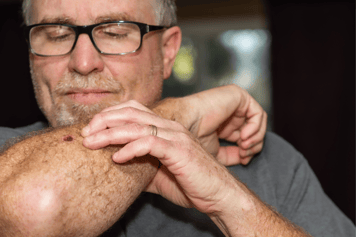Breast cancer is a disease that touches the lives of many people, either directly or indirectly. It’s one of the most common types of cancer among women worldwide, but it can affect men as well. Let's dive into breast cancer, covering everything from symptoms and risk factors to prevention and early detection.
Understanding Breast Cancer.
Breast cancer is a malignant tumor that develops in the breast tissue. It occurs when cells in the breast begin to grow uncontrollably, forming a lump or mass. While breast cancer can occur in both men and women, it is far more common in women. It is important to remember that not all breast lumps are cancerous. But, your healthcare provider should look at any changes in the breast.
Symptoms of Breast Cancer.
Recognizing the signs and symptoms of breast cancer is important for early detection and successful treatment. Common symptoms include:
- Breast lump or thickening: A painless lump or thickening in the breast or underarm is often the first noticeable sign.
- Change in breast size or shape: Investigate any unexplained change in the size or shape of the breast.
- Nipple changes: Look for nipple discharge (other than breast milk), nipple inversion, or changes in skin texture around the nipple.
- Breast pain: While not usually a sign of cancer, report persistent breast pain to your healthcare provider.
- Skin changes: Redness, dimpling, or puckering of the breast skin can be indicative of breast cancer.
Risk Factors.
Several factors can increase the risk of developing cancer. Some of the most significant risk factors include:
- Gender: Being a woman is the most significant risk factor, as it’s more common in women than in men.
- Age: Risk increases with age, with most cases in women over 50.
- Family history: A family history of cancer, especially among close relatives, can elevate your risk.
- Genetics: Inherited gene mutations, such as BRCA1 and BRCA2, can significantly increase your risk.
- Hormone replacement therapy (HRT): Long-term use of certain hormone replacement therapies, particularly combined estrogen and progestin therapies, may increase the risk.
- Personal history: A previous breast cancer diagnosis or certain non-cancerous breast diseases can increase the risk of future breast cancer.
Breast Cancer Prevention and Early Detection.
While not all breast cancers can be prevented, there are steps you can take to reduce risk and detect the disease earlier:
- Regular breast self-exams: Perform monthly breast self-exams to become familiar with the normal look and feel of your breasts. Report any changes to your healthcare provider.
- Clinical breast exams: Have regular clinical breast exams performed by your healthcare provider, as part of your routine check-ups.
- Mammography: Women aged 40 and older should have regular mammograms. Tumors that are too small to be felt can be detected by these X-ray images.
- Know your family history: If you have a family history of breast cancer, discuss your risk with a healthcare provider. Genetic testing may be recommended.
- Maintain a healthy lifestyle: Eating a balanced diet, exercising regularly, limiting alcohol intake and avoiding smoking can help reduce your overall cancer risk.
With awareness, early detection and appropriate medical care, breast cancer is often treatable. Understanding the symptoms, risk factors and prevention strategies is crucial for everyone, regardless of gender. Regular screenings and a healthy lifestyle can significantly improve the chances of early detection and a positive outcome.
Here’s how your virtual primary care provider can help with breast health.
If your employer provides you with First Stop Health Virtual Primary Care, your personal provider can:
- Assess your risk factors, which include age, genetics, breast density, your personal and family health history, exposure to radiation and more.5
- Help you lower your risk. Some risk factors for breast cancer are within your control! Your doctor can make recommendations related to your physical activity, weight, reproductive health, hormone intake, alcohol intake and more.6
- Order tests and screenings. Your doctor can order a mammogram (imaging of the breast) at an in-network facility that is convenient for you.
- Refer you to a breast specialist. If you are at a higher risk of breast cancer, your doctor may refer you to an in-network breast specialist who can further evaluate your breast health.
.png?width=1650&height=1275&name=website%20images%20(30).png)
Table of contents



